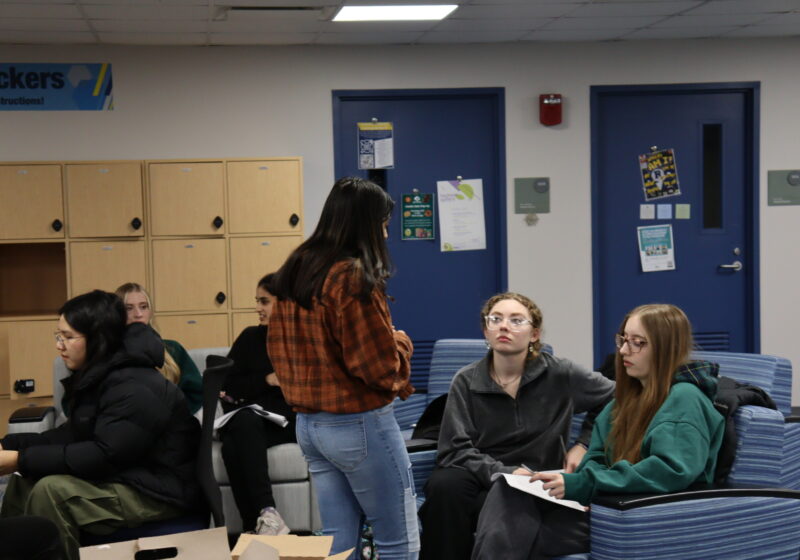On Saturday night, ABC’s “48 Hours” aired “Memory of Murder – Who would want to brutally murder the perfect all-American family with an ax?” – an hour-long special on the murder of Peter Porco and attack on Joan Porco that led to the arrest and conviction of former UR student Christopher Porco.
Correspondent Peter Van Sant filmed much of his commentary on the River Campus in the Welles-Brown Room, on the stairs leading upstairs in Rush Rhees Library, outside of Munro House and on Elmwood Avenue, under the University bridge.
The 48 Hours crew approached UR over the summer to ask for permission to film parts on campus. The decision allowing them to do so was ultimately made by the Office of Communications.
“I discussed it with [Vice President of Communications] Bill Murphy and we thought it would be better for us to be with people and to answer their questions as opposed to them just getting pictures off the Internet,” Public Information Coordinator Sharon Dickman said. “We figured that having our input would provide a true picture of what goes on here, what life is like and what our campus is about. I accompanied the crews most of the time. We can’t just hang up and do nothing when they come to us. What we can do is work with this news crew to protect our interest. We tried to find a fair way to move forward and work it out. The University was in a difficult position.”
Van Sant came to campus over the summer, and again on Sept. 24 to film.
“To me, the whole incident seemed very contained on campus and in Rochester. I didn’t realize how widely known the case was,” junior Sara Ancello said, who was studying upstairs in Rush Rhees at the time. The stairs leading up to the Periodical Reading Room and the Great Hall were closed at times to allow for silence during the shots.
Pictures from the Sigma Phi Epsilon floor in Monroe House, where Porco lived and was a brother, also appeared throughout the documentary, although they were not provided by the University.
“I think they did a very good job of keeping it completely impartial in that sense that any references were to factual evidence, as in what time people saw him, etcetera,” SFE brother and junior Pete Van Hoff said.
Some of the additional footage that was aired was provided by UR Security – of Porco’s yellow Jeep Wrangler leaving campus on the night of the murder and returning the following morning at 8:30 a.m.
“I thought the documentary came off as fair to me; it didn’t give anyone the impression that we breed murderers or help them carry out crimes,” Dickman said. “It was not inflammatory and pumped up; it simply showed us as the backdrop of what had happened. Because of his travels on the night of the crime, we were a necessary part of the story.”
However, some students were not convinced that the documentary did a good job of separating the facts of the case from the desire to entertain 48 Hours viewers.
“I thought they made the campus look like a crime scene,” junior Jeff Juron said. “It was almost spooky looking, with the way they did the camera shots and the lighting. I didn’t think there was any need for them to film here – nothing happened on campus, and it is only bad press.”
In addition, the footage – pictures from the actual crime scene the morning police investigators arrived – conjured up a lot of emotions that UR students thought were buried.
In terms of the lasting effect on the image of the University, Dickman does not believe that the case will have a consequence. “I don’t think this will [hurt our reputation], it’s hard to know,” Dickman said. “Someone who sat in on the trial told me that the University (because part of the trial dealt with money and the conflict that Porco had with his father about paying tuition) was portrayed as an elitist school, which I don’t think we are. Things kind of go on, and there’ll be a new type of issue. People might remember, but if I were a parent looking for a school for my son or daughter, I would not be bothered by any of this.”Paret is a member of the class of 2008.





